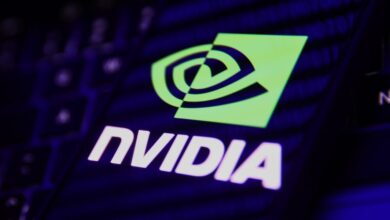Wall Street can’t stop setting records. But a big test is coming

But even that’s a little misleading. Really, the S&P’s gains this year have been driven by three of those tech giants: Facebook owner Meta Platforms (which is up 13 per cent this year), AI chipmaker Nvidia (up 28 per cent this year) and Microsoft (up 9 per cent this year).
Indeed, Microsoft celebrated a nice little milestone on Thursday night, closing for the first time with a market capitalisation above $US3 trillion ($4.56 billion) and, closing with a market value bigger than Apple’s for the first time in a long time.
Frankly, it’s all a little bit weird.
Just 25 days into 2024, the S&P 500 has already surpassed the median price target Wall Street banks set for the end of the year.
Economic growth remains resilient, bond yields have climbed a bit in recent weeks, and yet the equity markets grind higher suggests no one has lost their faith in Fed rate cuts that will arrive fast and continue through the year.
The market is being driven by a handful of pretty expensive stocks, but December quarter earnings look fairly middling, even against consensus expectations that were lowered significantly coming into this earnings season.
Even bullish market observers, such as prominent US commentator Ed Yardeni, are wondering if we’re starting to see a tech-led melt-up on markets, where we shift from “immaculate disinflation to irrational exuberance”.
To emphasise this point, the S&P’s tech sector index weight crossed 30 per cent on Thursday night for the first time since 2000 – just before the dotcom crash.
A fascinating test of how strong bullish sentiment really is on Wall Street lies ahead over the next week, with four key events.
First, on Friday night, we get more personal consumption expenditure (PCE) data for December, which is the inflation gauge that the Fed watches most closely. As Chanticleer predicted last week, Fed governor Christopher Waller’s warning that rate cuts might not come as quickly as expected has been brushed aside by investors, but any surprise in the PCE data could reinforce the Fed’s resolve.
Early next week, we have the next quarterly refunding announcement (QRA) from the Treasury, which will set out its plans for debt issuance over the next three months. The question of how much debt the US government needs to issue, and the strength of demand for that debt, has become increasingly important in the last year, and these QRAs have taken on extra significance.
The Fed’s rate-setting meeting takes place on January 30-31, with an announcement of its rate decision scheduled for 6am AEDT next Thursday. While the official Fed Funds rate is nearly certain to remain on hold, the news conference after the announcement will provide a chance for Fed chairman Jerome Powell to push back on market expectations of a March rate cut. But if he doesn’t, the pivot party will roll on.
Finally, next week will see 40 per cent of the companies on the S&P 500 deliver their results, including Microsoft on January 30 and Alphabet, Apple, Amazon and Meta Platforms on a bumper day of tech results on February 1.
Most likely, most of these events will come and go without too much drama.
Inflation looks mostly tamed, and a PCE surprise is unlikely. For all the hand wringing about the size of US debt, bond buying continues at apace. Jerome Powell has had chances to push back against market rate cut expectations before, so he’s probably unlikely to start now. And comparisons between the dominance of the tech sector today and in 2000 aren’t exactly fair – back then, the market was being driven by untested, unprofitable start-ups, not a group of relatively mature, proven tech giants who are enmeshed in society.
But there’s no shortage of complacency in this market. Volatility remains extremely low, and short selling has decreased. The old adage of past melt-ups – if you’re not long, you’re short – seems to prevail.
But Tesla’s earnings stinker and share slide remind us that even the biggest companies are not immune from hitting tougher times. And with the Magnificent Seven now so dominant in terms of their index weight, any disappointments could have a disproportionate impact on the wider market.
Be alert, not alarmed.





